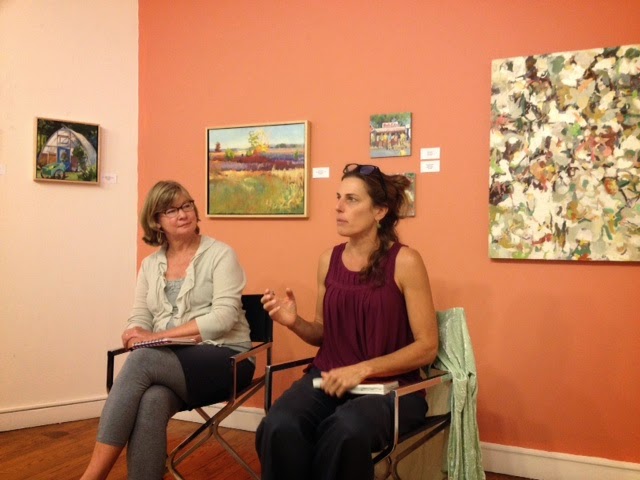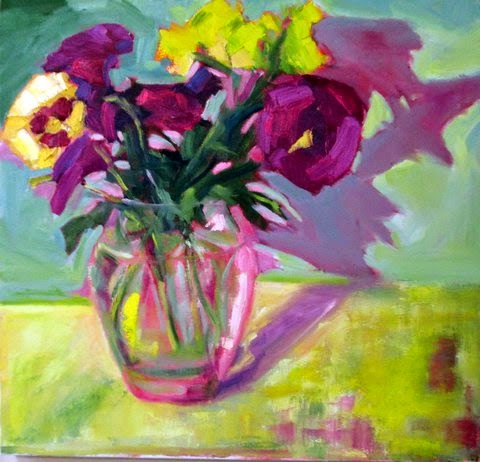Artist Talks, How do we do them?
The occasionally dreaded, often inspiring, and sometimes obtuse Artist Talk- why do one?
Most artists know that collectors and others like to talk to artists at gallery openings, open studios, art fairs and any other place where the artist is front and center. Public speaking has become just part of the career that is creating art. Even a short conversation or talk about the intent of the body of work, or an artist's process, can bring understanding to people that have no way to know what the thinking or process of making is behind a piece of art. The artist can broaden the base of collectors, fans or friends by offering these explanations. So why are they so hard to do? I know for me it typically raw fear. Mostly the fear is around not being able to speak clearly about what I do, as well as fear of boring the crowd. So far I don't believe that either of those things have occurred, and it seems that the magnitude of the worry about that might be out of proportion with the usual reality. So shelve the fear and do the talking- at least that's what I tell myself!
I just completed an hour long talk about our side by side solo shows and the feedback was good, people were enthusiastic after the talk and it seems to generate interest in the work we had on view. Success!
August 14, Artist Talk with Janet Ledoux and Elizabeth Kelley Erickson.
 |
| Janet and Elizabeth talking |
I have been to many artist talks over the years, and a couple of them have stayed more memorable than the others. Painter and arts writer Rackstraw Downs spoke at the Portland Museum of art when his retrospective was there. He had a power point of the art in the show and a really clear and descriptive essay completely written out which he read. He took no questions after, which is unusual. Laylah Ali came to MECA and spoke at Osher Hall as a visiting artist in the MFA program. (The whole visiting artist program at MECA is great and the talks are free and open to the public.) Ms. Ali was very informal and down to earth about her biography and process. I took home several really good ideas for my own approach. She took a large number of sometimes personal questions very gracefully.
This was my third talk at a gallery around a show. Using my own past experience, good talks I've heard, and Elizabeth's experiences, we settled on this approach, and it worked pretty well:
1. Offer real content. This is what the good art speeches consist of: concrete thought out interesting content. This seems obvious perhaps, but it's hard to do well. It's tough to know what among the many kinds of content you might offer what would be of interest to a given group.
2. An informal approach for this talk: match the approach to the venue. This was The Barn Gallery after all, a group of friends and summer visitors. Informal was the way to go. We kept it light and added some humor. After individually describing our bios and some of our ideas about our own work, we threw the conversational ball back and forth between each other. This was an active approach that made the talk more lively, informal, and spontaneous. It took some of the heat off each of us, too. Much less chance for the talk to lose momentum that way.
3. Get up and move around a bit. I went over to a painting or two on the wall as a visual for a point I was making. Adds variety to the talk and was good for me too.
4. Take questions. It's so much easier to guess what people want to hear if you can get it from them. The questions can be surprising, or maybe a bit silly, but it really helps keep the talk on track with the audience interest.
5. Keep it short if you can.
6. Just Do It
Here are a few favorite links to art talks/podcasts/videos
MECA events
Ted Artist Talks
National Gallery of Art Podcasts
Andy Goldsworthy is a favorite talk here.
Met Museum video
6. Just Do It
Here are a few favorite links to art talks/podcasts/videos
MECA events
Ted Artist Talks
National Gallery of Art Podcasts
Andy Goldsworthy is a favorite talk here.
Met Museum video


Comments
Post a Comment